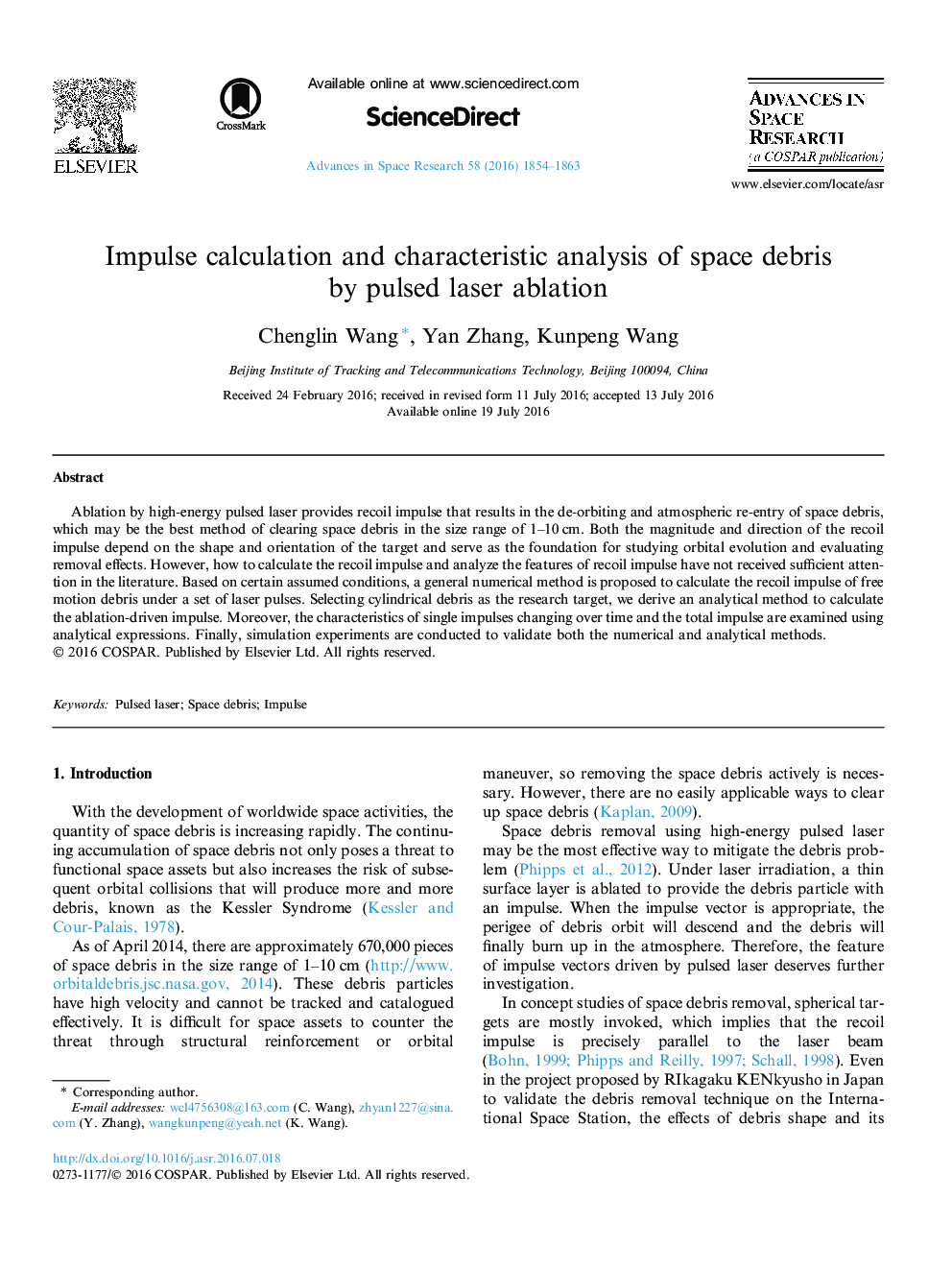| Article ID | Journal | Published Year | Pages | File Type |
|---|---|---|---|---|
| 5486617 | Advances in Space Research | 2016 | 10 Pages |
Abstract
Ablation by high-energy pulsed laser provides recoil impulse that results in the de-orbiting and atmospheric re-entry of space debris, which may be the best method of clearing space debris in the size range of 1-10Â cm. Both the magnitude and direction of the recoil impulse depend on the shape and orientation of the target and serve as the foundation for studying orbital evolution and evaluating removal effects. However, how to calculate the recoil impulse and analyze the features of recoil impulse have not received sufficient attention in the literature. Based on certain assumed conditions, a general numerical method is proposed to calculate the recoil impulse of free motion debris under a set of laser pulses. Selecting cylindrical debris as the research target, we derive an analytical method to calculate the ablation-driven impulse. Moreover, the characteristics of single impulses changing over time and the total impulse are examined using analytical expressions. Finally, simulation experiments are conducted to validate both the numerical and analytical methods.
Keywords
Related Topics
Physical Sciences and Engineering
Earth and Planetary Sciences
Space and Planetary Science
Authors
Chenglin Wang, Yan Zhang, Kunpeng Wang,
